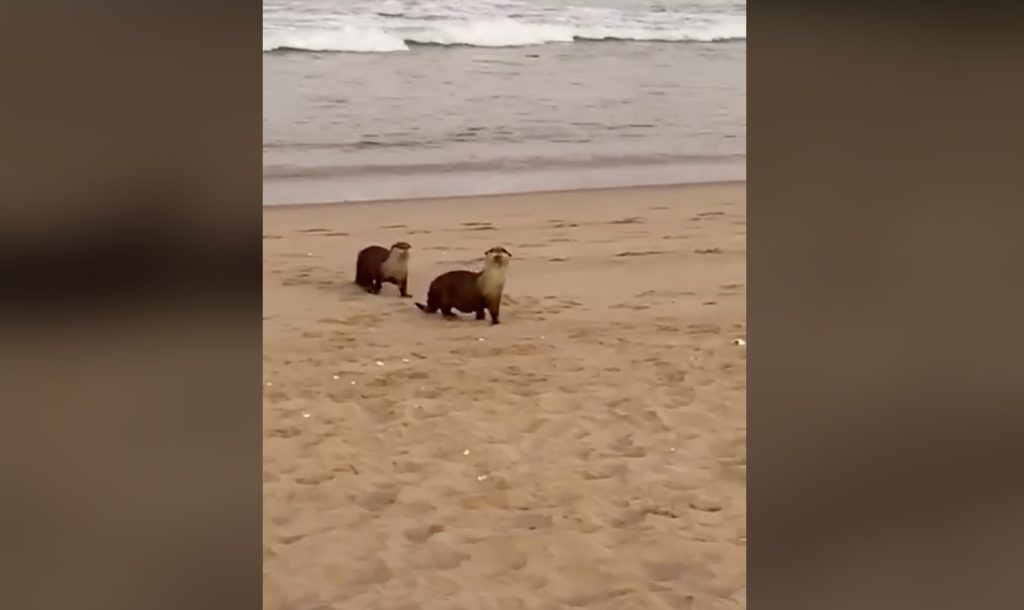A video taken on Robberg Beach shows two Cape clawless otters having fun along the shoreline. The animals can be seen walking across the beach and sitting in the sand. While their footprints are often seen in the sand by early morning walkers, it is rare to see the otters in action. Plettenberg Bay Tourism shared the chance encounter on Facebook.
“What a wonderful world! Toy Black spotted this pair of Cape clawless otters on Robberg Beach – what an incredible encounter. These reticent, agile mammals are a rare sight, indeed – although their footprints in the sand are often seen by early morning walkers. What a special encounter in Plettenberg Bay,” explains Plettenberg Bay Tourism.
What a wonderful world! Toy Black spotted this pair of Cape clawless otters on Robberg Beach – what an incredible…
Posted by Plettenberg Bay Tourism on Sunday, 2 August 2020
The Cape clawlesss otter, also known as the African clawless otter (Aonyx Capensi), is a robust animal that is both nocturnal and diurnal. It is the second largest freshwater species of water after the South American otter.
They are often found throughout sub-saharan Africa near bodies of water in surrounding areas, feeding on crabs, molluscs, fish, birds and a range of rodents and amphibians.
The world-famous Otter Trail, the oldest hiking trail in South Africa is named after these cheeky creatures. It traverses over 40km along the coastline between Storms River Mouth and Nature’s Valley and was established in 1868.
Unfortunately, their population is slowly decreasing and in 2014, Cape Clawless Otters were listed as near threatened by the International Union for Conservation of Nature (IUCN).
“Although this species has a large distribution they are restricted to areas of permanent fresh water, offering good shoreline cover and an abundant prey base. Thus while the distribution range is large the spatial size of their occupied habitats is much smaller and unknown, particularly due to the widespread habitat destruction and pollution problems reported for much of the African continent,” explain the IUCN.
The main threat to the species is the declining state of freshwater ecosystems in Africa. Climate change and increasing human/otter conflict for increasingly scarce resources such as water, land, and fish may impact on this species survival.
Picture: screenshot from video

